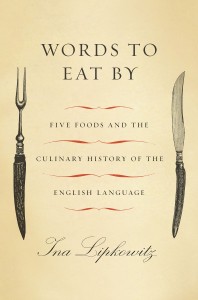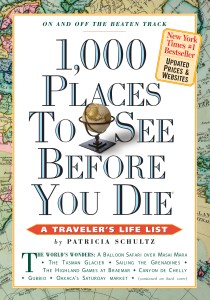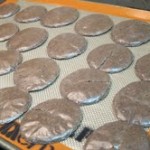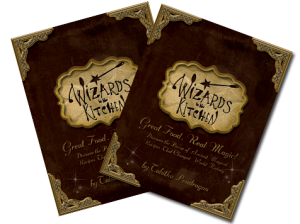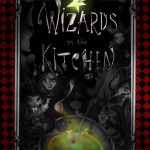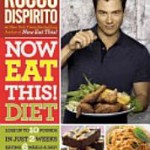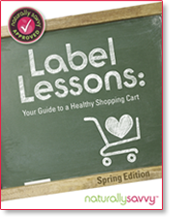 If you’re like me, you learn better when the person teaching you is passionate about the subject matter. My experience in speaking with Andrea Donsky was no exception. Andrea is a charming and intelligent individual, who is extremely passionate about healthy living. In the forty five minutes I spoke with her, I walked away with an encyclopedia of new knowledge, and a belief that I could incorporate her strategies into bettering my own lifestyle.
If you’re like me, you learn better when the person teaching you is passionate about the subject matter. My experience in speaking with Andrea Donsky was no exception. Andrea is a charming and intelligent individual, who is extremely passionate about healthy living. In the forty five minutes I spoke with her, I walked away with an encyclopedia of new knowledge, and a belief that I could incorporate her strategies into bettering my own lifestyle.
Andrea’s story reminds me not only of my own, but of many others who are now living gluten-free lifestyles. She was experiencing symptoms for which doctors could find no explanation or cure. So she took control of her own health and well-being. She read everything she could get her hands on and began experimenting with controlling her diet. Over time she noticed that by following a strict gluten free and dairy free lifestyle, she was feeling like a new person.
This is where Andrea sets herself apart by setting the bar higher. Where most of us would have settled for being happy because we were feeling better, Andrea decided that still was not enough for her. She had grown to feel passionate about the healthy lifestyle she was living so she felt she needed to share all that she had learned with other people who were still suffering. She finally quit her job and went to study formally at a Holistic Nutrition school.
She didn’t quit there though, her commitment and desire to share her knowledge inspired her to begin The Healthy Shopper Inc., a coupon book that offers discounts on healthy food options, and NaturallySavvy.com, a website dedicated to educating people on the benefits of living a natural and organic lifestyle. Both of these outlets fulfill her purpose of using her knowledge to educate the public about eating healthier.
It was an honor to speak with Andrea recently and have her share information from her latest book Label Lessons: Your Guide to a Healthy Shopping Cart, as well as revisiting topics from her previous book Unjunk Your Junk Food.
Enjoy these highlights from our interview.
So Andrea, you’ve mentioned that you help clients stay away from Fad diets, do you include more rigid adherence to not eating processed foods like the Paleo diet in that category?
I don’t really consider Paleo a diet, it’s more of a lifestyle choice. I’ve tried every diet out there at one point or another: Atkins, Food for Life, Zone, Blood Type, etc. What I’ve learned is that every person is different, and you need to choose the eating style that fits your style. Right now I follow a gluten and dairy free lifestyle and it works wonders for me. I still have a sweet tooth so I indulge occasionally, as evidenced by my first book “Unjunk the Junk Food.” However, when I do, I make sure to read the ingredients and understand what I’m putting into my body. I believe that reading labels is the key to healthy living.
What are some of the most common mistakes people make when trying to grocery shop for healthy foods?
Many people focus on the fat and calories instead of actually reading the ingredients. We live in a culture that has taught us to look for lower fat or caloric content. However, to get that lower fat or caloric content food companies are adding all kinds of dangerous ingredients and chemicals to still give us that desired flavor. During the two years it took us to write Unjunk Your Junk Food, we came across a group of seven harmful ingredients that appeared in most of the “bad” choice products we came across so we called them: The Seven Scary. They are: High Fructose Corn Syrup, Trans Fat (Partially Hydrogenated oils), Monosodium Glutamate (MSG), Artificial Flavors, Artificial Colors, Artificial Sweeteners, and [certain] Preservatives. If a product contains any of The Scary Seven ingredients, we urge people to put them back on the shelf. The problem doesn’t start with the fat or calories in a product, but rather the harmful ingredients they can contain and the damage those chemicals can do to our bodies. Many companies also try and trick you with misleading labeling and marketing terms. People need to learn to focus on looking at the ingredients label rather than the front of the package.
What advice do you give families trying to get their kids to eat healthier?
Educate the kids and get them involved starting at a young age. Explain the difference between organic and non- organic to them. Watch movies. My nine year old watched Supersize Me at a friend’s house and now he avoids McDonald’s. I believe in teaching our kids how to properly read labels. If you get them involved in their own food choices it helps to minimize their susceptibility to ads and peer pressure. They are still kids, so I am realistic with my expectations, but every little bit counts.
I saw on your Twitter recently that you were asking your readers if the expense of following an organic diet was limiting. What are your thoughts on the matter and what advice would you offer people a limited food budget?
Do the best you can with the budget you have. If you can start by eliminating any of The Scary Seven ingredients, that is a huge step in the right direction. One of the things I did to work within my budget is to eat less meat. I try and make vegetables the main source of our meals. Coupons can also help you save money. The Healthy Shopper Coupon Book (www.thehealthyshopper.ca) has great e-coupons on its site or you can also find the coupon books at health food stores across Canada.
You offer so much wonderful information with scientific evidence to back it up. How do you break down and sum up your overall message for people to remember? Do you have a mantra?
If you don’t understand what you’re reading, put it back on the shelf. And start with one thing, it’s all about baby steps. If you eat a lot of eggs or milk, switch to organic versions. You don’t have to go gang busters with trying to incorporate all of these changes at once. Just one thing can make a difference and then continue incorporating other small changes slowly.
Check out Andrea’s latest book Label Lessons: Your Guide to a Healthy Shopping Cart for more information about healthy changes you can make to improve your lifestyle. You can download the E-book for free through June 26th. Also check out her website http://www.naturallysavvy.com/ for more interesting articles.
-JPM (Joyana)


